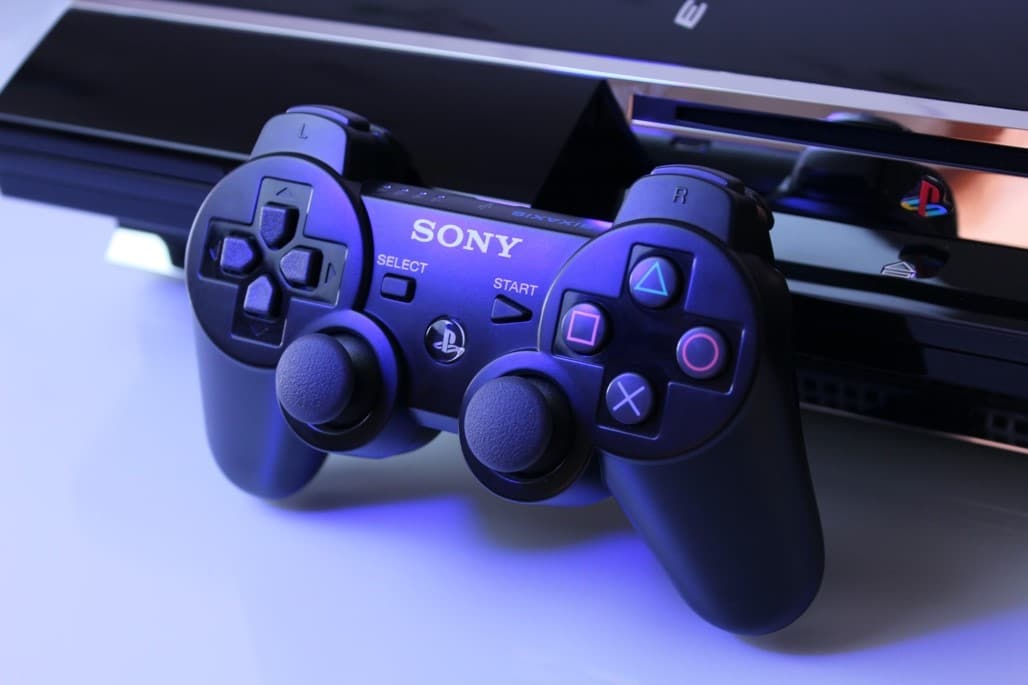Company: Sony
CEO: Kenichiro Yoshida
Founder: Akio Morita, Masaru Ibuka
Year founded: May 7, 1946
Headquarters: Minato City, Tokyo, Japan
Employees (2020): 114,400
Ticker Symbol: SNE
Type: Public
Annual Revenue (FY2019): US$79.2 Billion
Profit | Net income (FY2019): US$6 Billion
Products & Services: Televisions | Smartphones | Personal Computers | Cameras | Home Appliances | Electronic Components | Movies | Music | Gaming | Financial Services
Competitors: LG Electronics | Panasonic | Apple | Toshiba | HP | Samsung | Lenovo | Microsoft | Philips | Acer | Universal Studios | Warner Bros | Nintendo | Canon | Nikon | Olympus | Leica
Fun Fact: Did you know that Sony was founded as Tokyo Telecommunications Engineering Corp. but changed the name to Sony Corp in 1960 to offer its products globally? Sony was attained by combining “Sonus” for sound in Latin and the American word “sonny.”
Sony is a major global player in three sectors; consumer electronics, gaming, and entertainment. While most companies struggle to maintain their position in only one sector, Sony has held on to its market share in all three sectors for decades.
This can only be attained by a company with extensive experience, expertise, and innovative strategies. To understand the company’s strengths, weaknesses, opportunities, and threats, you have to undertake a Sony SWOT Analysis.
Here is a SWOT analysis of Sony.

Sony’s Strengths
- Experienced Global Player: The global marketplace is not only highly competitive and complex but also requires extensive experience to succeed. Sony expanded to the US and Europe in the 1960s and 70s and was a major global player long before most of its competitors were founded.
- Widest Variety: Catering to the needs of the entire market guarantees high profits and long-term sustainability. From home appliances to mobile phones and entertainment, Sony offers a wide range of consumer products and services.
- Quality Products: Offering high-quality products consistently is easier said than done without the interest of esteemed customers at heart. Sony’s huge investments in R&D has enabled the company to provide high-quality products consistently.
- Valuable Brand: Since its founding, Sony has obsessively focused on fulfilling the needs of consumers, which has enabled the company to nurture a highly valuable brand. In 2019, Sony was ranked #39 Top Regarded Companies and #60 World’s Most Valuable Brands.
- Highly Innovative: Sony is one of the most innovative companies having invented or contributed to the development of revolutionary consumer products. From Trinitron Color TV to Blu-Ray disc, VCR, Walkman, compact disc, and Crystal LED TV, Sony has contributed immensely to the consumer electronics market.
- Loyal Customer Base: Sony has amassed a large and loyal customer base. For one, Sony’s loyalty program for gamers using PlayStation has ensured that they will never even think about switching to competitors.
Sony’s Weaknesses
- Overdependence on Electronics: Sony depends heavily on electronics, particularly TVs, cameras, and smartphone image sensors. In the fourth quarter of 2019/20 financial year, Sony’s operating profits dropped by 57% due to a drastic decline in demand for electronics.
- Negative Publicity: When a company is hacked, it exposes trade secrets to competitors and creates the perception of incompetence on consumers. In 2014, Sony was hacked leading to exposure of sensitive trade secrets, which strained relations with other companies.
- Expensive Products: Regardless of the product, price matters. Sony offers premium products with higher price tags beyond most consumers. This is a major weakness since the price discourages a large number of potential customers.
- Poor Marketing: Compared to competitors like Apple and Xbox, Sony’s marketing efforts and promotional activities are weak and substantially lower. Consumer products require extensive marketing and promotion to sell, regardless of quality and reputation.
Sony’s Opportunities

- Focus on Emerging Economies: The International Monetary Fund (IMF) projects that economic growth will be faster in emerging markets at 4.7% than in developed markets at 2.1% in the coming years. Sony expands its operations in emerging economies and exploits increasing purchasing power in these markets.
- Strengthen Medical Imaging: Medical display market is projected to grow at a CAGR of 4.4% from 2018 to 2025. Sony operates in this field and only has to strengthen its imaging division and tap into the projected growth.
- Diversify Offerings: Even though Sony’s PlayStation is a major player in gaming, this division lacks diversification. For one, the demand for mobile games is increasing Sony has the opportunity to diversify its gaming division to offer more mobile-based games.
- Expand through Acquisition: Instead of over-depending on the consumer electronics market, Sony can leverage its vast financial resources to acquire innovative startups in lucrative sectors like software development.
Sony’s Threats
- The devastation of Recession: The economic devastation left behind by the pandemic is pushing countries deeper and deeper into recession. In times of economic hardship, expensive premium products that are not essential like Sony’s products are usually the first casualties.
- Stiff Competition: From LG in TVs to Samsung in mobile, and Nintendo in gaming, Sony is facing stiff competition in all areas of focus. In India, the company’s sales have been declining three years in a row as competitors reduce market share. Sony can lose profitability in the future as new and old competitors up their game.
- Advances in Technology: Even though technological advances are always welcomed, it bridges the gap between established players and newcomers. Over the last decade, technological advances have enabled newcomers like Techno and TCL to offer quality products that can substitute Sony’s products but at a cheaper price.
- Oversaturation of Markets: Sony Mobile was forced to exit Southeast Asia after an increase in the supply of smartphones led to oversaturation. As more companies enter into Sony’s markets, the demand and profitability of its products will continue to decrease.
- Global Pandemic: Companies across the world are struggling with low demand and uncertainty due to the pandemic. Sony’s operating profit for the first quarter of 2020 dropped by more than 30% to its lowest in four years. If the situation persists or worsens, the damage to the company’s financial well-being can be irreversible.
- Risks Posed by Hackers: Any company that operates in the film, electronics, and gaming sector is susceptible to the threat posed by hackers, which can cost millions of losses and lawsuits. Sony Pictures has experience on the far-reaching consequences of a breach.
- Increasing Counterfeit: Trade in fake products stands at 3.3% of global trade and continues to increase. Premium products like Sony’s TVs, phones, and gaming console are a prime target for counterfeiters.
References
- Kennan, M. (2017, September 26). Sony Corporation History & Background. Bizfluent
- PR News (2019, September 19). Sony Reveals New Line-up of Next-Generation Products, Solutions, and Services at IBC 2019. PR Newswire
- Jiji Press. (2019, February 21). Sony to Hire 20 Pct More R&D Workers in Spring 2020. Nippon
- Forbes Ranking (2020). Companies: Sony Corp. Forbes
- Sloane, P. (2018, November 21). Innovation Insights from the Founder of Sony. Innovation Management
- PR Newswire. (2019, November 12). Alliance Data Selected By Sony To Enhance Customer Loyalty And Digital Engagement. Alliance Data
- Cushing, C. (2020, May 13). Sony reports a 57% drop in Q4 profit, declines to give an outlook. Reuters
- Siegel, T. (2019, November 25). Five Years Later, Who Really Hacked Sony? Hollywood Reporter
- Willcox, J. K. (2020, April 04). Why It Doesn’t Always Pay to Buy Cheap TV. Consumer Reports
- Triggs, R. (2017, November 15). Here’s what Sony needs to do to get back in the smartphone game. Android Authority
- Pathak, T. (2019, June 13). Smartphone Growth in Emerging Markets Will Continue. CounterPoint
- Data Bridge (2020, May 16). Marvelous Growth of Medical Display Market. Surfacing Magazine
- Tech Desk (2020, March 19). Mobile games demand to rise as coronavirus forces people to stay at home. The Indian Express
- Columbus, L. (2019, November 16). 68% Of Deloitte’s 2019 Tech Fast 500 Are From Software. Forbes
- Ezrati, M. (2020, April 1). First Statistical Signs Of The COVID-19 Recession. Forbes
- Dutta, A. (2018, October 4). Sony India sales drop for 3rd yr in a row on tough competition in the TV market. Business Standard
- Fowler, J. (2019, June 25). 7 Products That Are Getting Cheaper. INVESTOPEDIA
- Torres, J. C. (2019, January 17). Sony Mobile in trouble, silently exiting Southeast Asia. Slash Gear
- Yamazaki, M. (2020, May 13). Sony braces for the lowest profit in four years hit broadly by the coronavirus. Reuters
- Stengel, R. (2019, October 6). The Untold Story of the Sony Hack. Vanity Fair
- Bremer, C. (2019, March 18). Trade in fake goods is now 3.3% of world trade and rising. OECD
- Featured Image by Nikita Kostrykin on Unsplash
Tell us what you think? Did you find this article interesting?
Share your thoughts and experiences in the comments section below.












Add comment